'Images Depicting the Gods of the Ancients' by Vincenzo Cartari was first published in 1556. The engravings below are from a 1624 edition (in Italian).


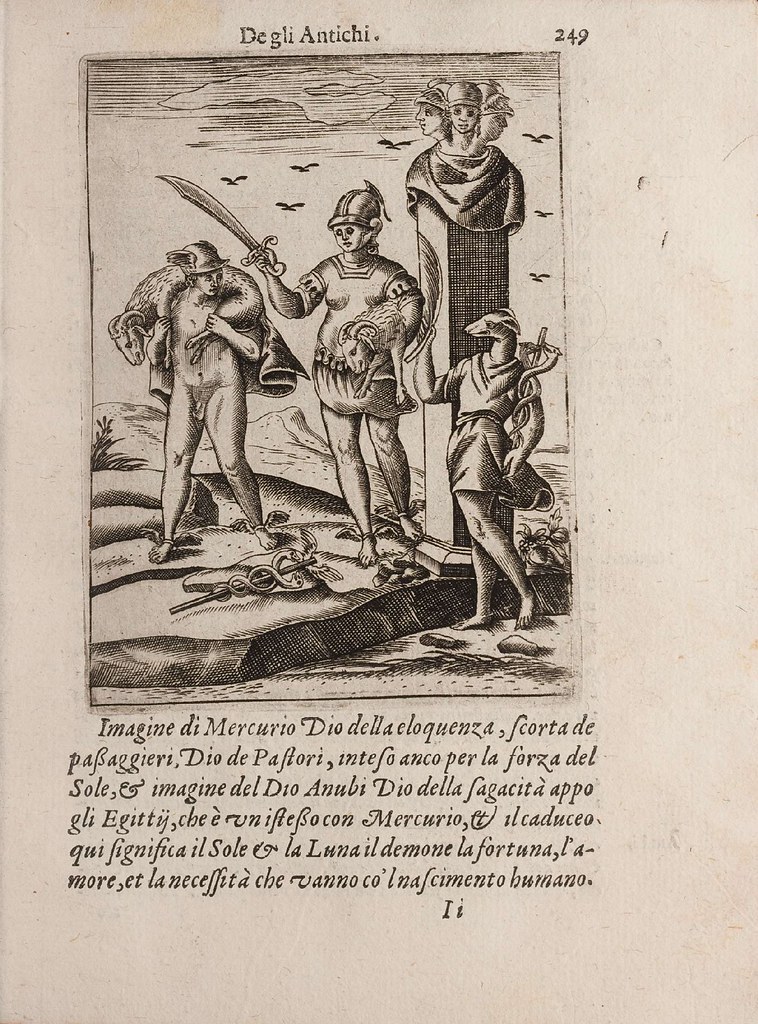
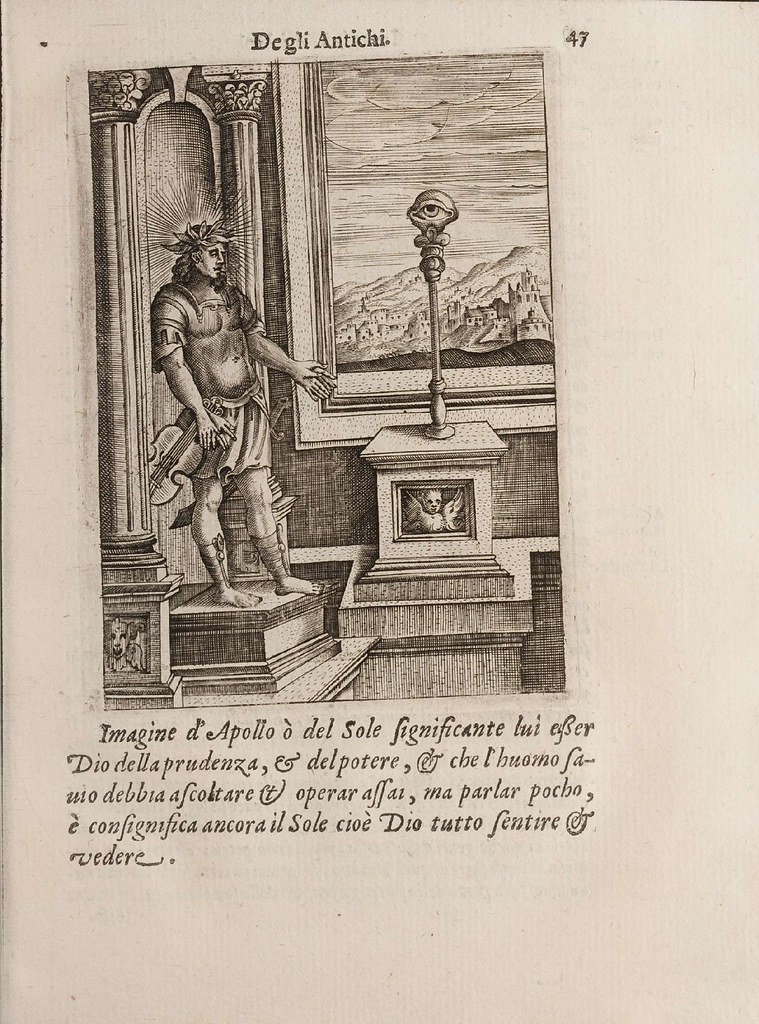
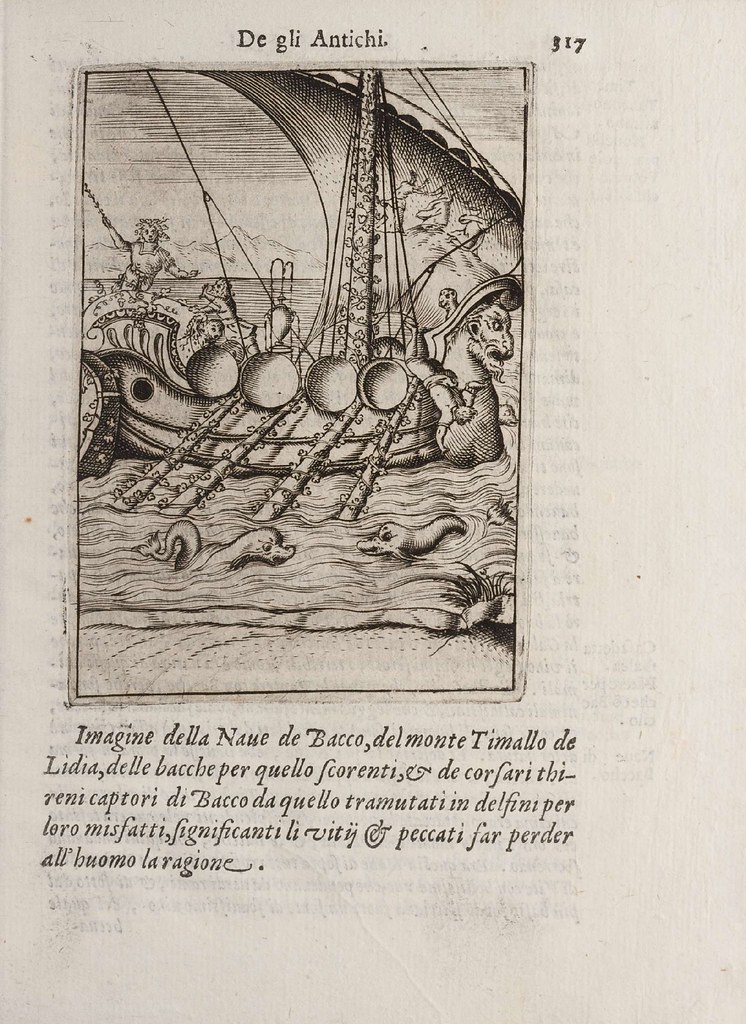


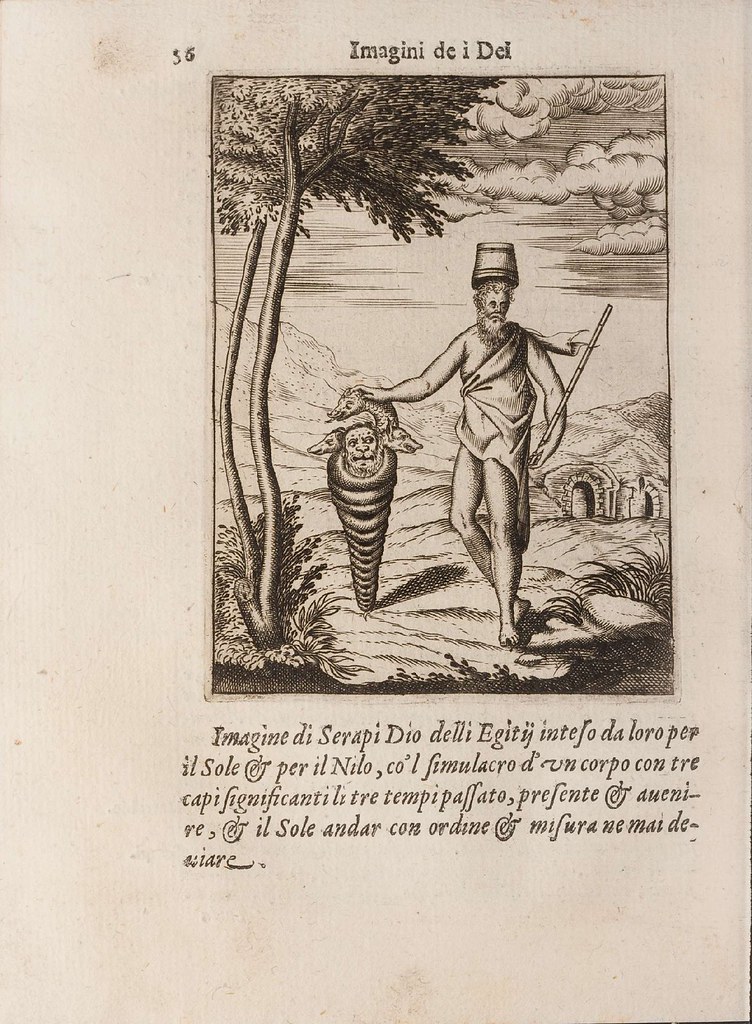
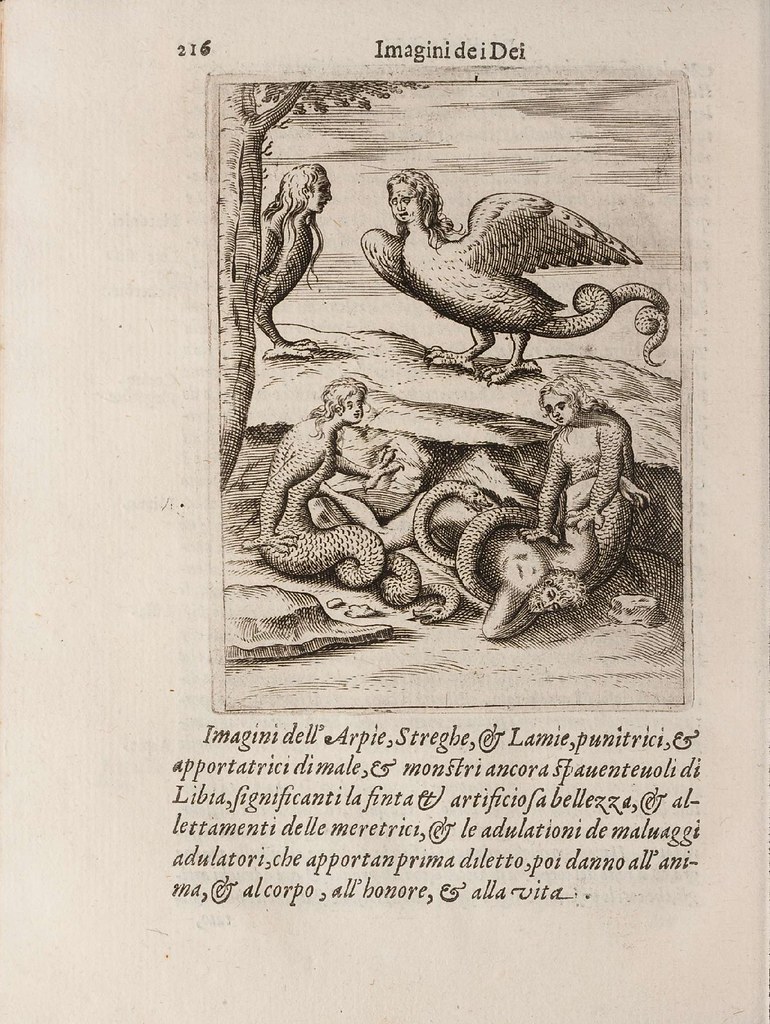
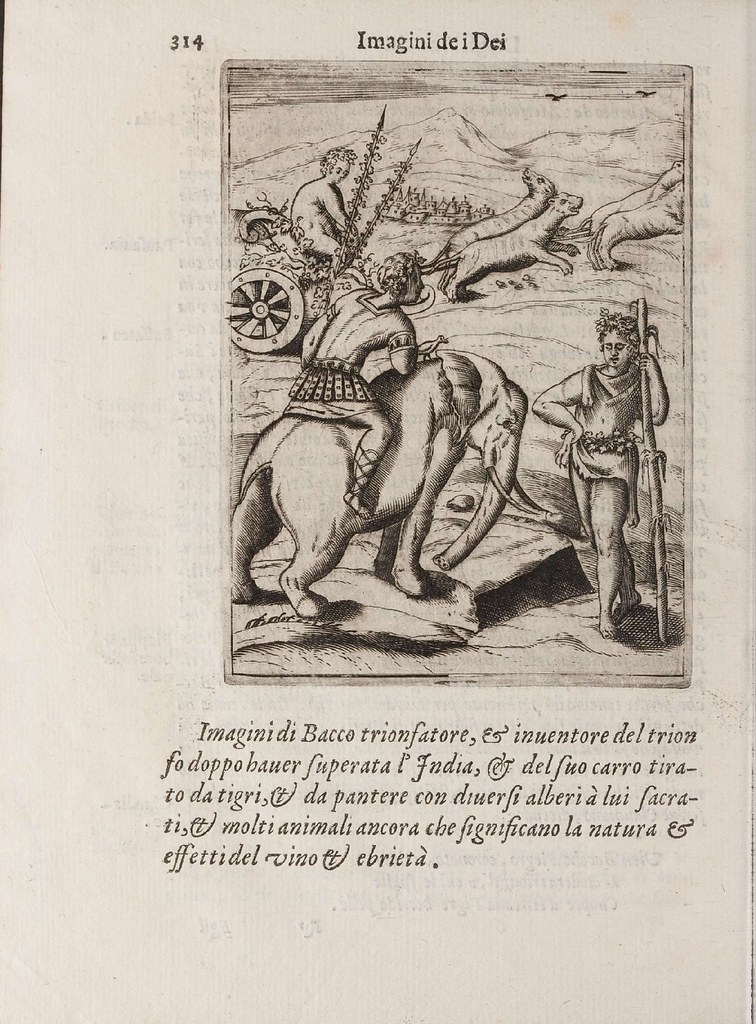
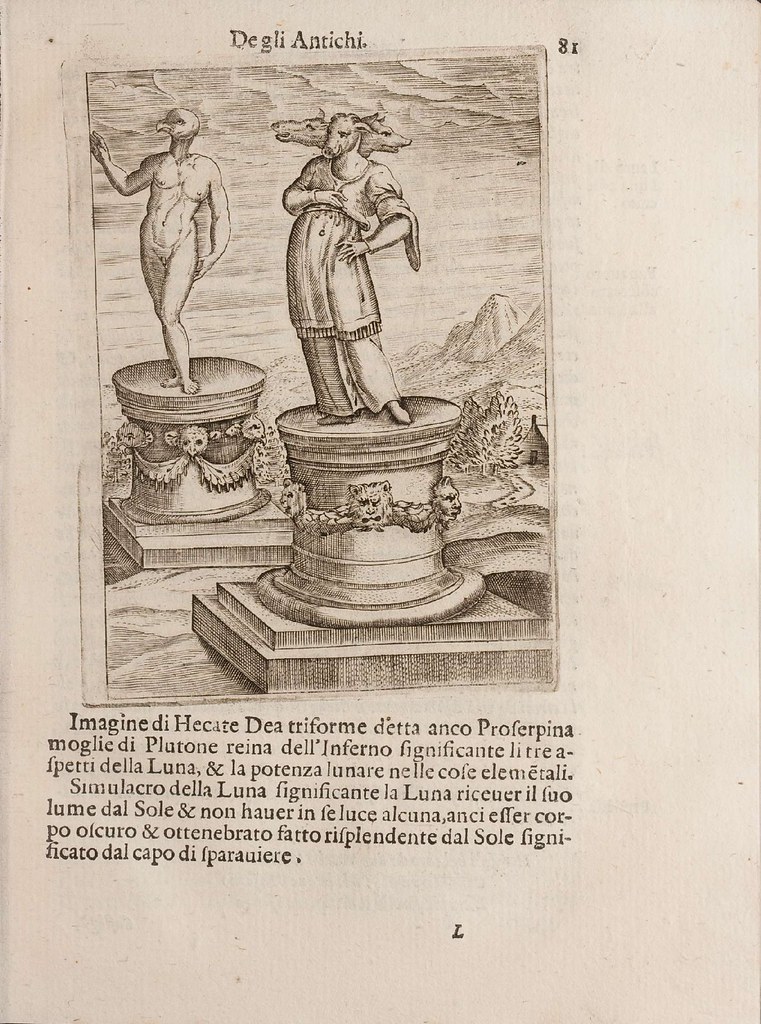
'Le Imagini De gli Dei de gli Antichi' by Vincenzo Cartari (with illustrations based on designs by Bolognino Zaltieri) was recently made available online via Wolfenbütteler Digitale Bibliothek.
[this is the 1664 edition, in the original Italian, with the woodcuts (that first appeared in the 3rd Ed.) replaced by engravings of modest artistic merit perhaps, yet possessing a not insignificant - continuing - contemporary influence].
Misteraitch, at the venerable (and retired) Giornale Nuovo, covered this book some years ago, displaying some woodcut scans from an earlier edition, and including some very useful commentary which is recommended; but I shan't repeat it here. The engravings above seem to be both reversed and modified from the original woodcut layouts.
Instead, as an adjunct, I'll paste in below the (complete and unaltered) translated commentary on Cartari's book from a rare book exhibition at the University of Navarra (in Spain) [LINK]:
"Mythological matter was one of the sources and themes used in literature and art of the Renaissance and Baroque periods, both in its more pagan and hedonistic as its symbolic and moralized version. The myths came to the sixteenth century by two ways: the deformed but very influential medieval transmission, and collected by his humanist philological recovery of ancient texts and testimonies.
One of the works that contributed to the systematization and dissemination of this rich heritage throughout the sixteenth and seventeenth centuries was the work of Italian poet Vincenzo Cartari 'I Imagini Antichi degli degli Dei, nelli cualisono degli Antichi descritte religione him, riti e parrot ceremony with di molto agiunta principalia l'e con l'Imagini Esposizione in epilogue di suo ciascheduna and significance'.
Cartari, of which little else is known other than it was in the service of the house of Este, is known almost exclusively for this work and a versified translation of the Tuscan in meters Fasti of Ovid published in Venice in 1551.
The book is divided into 15 chapters, each of which is one of the main gods and lesser gods and heroes in some way related to it. The subject of each chapter comes from the texts of ancient poets translated by Cartari as Italian poems.
The cause of the success of the work was in addition to its originality in presentation, the only of its kind available in a vulgar tongue. This success was further increased from the 1571 Venetian edition by Ziletti Giordani, who illustrated with 89 large woodcuts opened by Bolognino Zaltieri dimensions.
Samples of undoubted interest aroused by the book are the successive reprints of the original Italian and translations of it made into Latin and French Verdier in 1581.
The copy owned by the Library of the University of Navarra belongs to the first edition of this Latin translation published in Lyon in July Guichard, Barthelemy Honorat and Michel Etienne. The engravings with which it is illustrated are very similar to those of Zaltieri, but sometimes are smaller and are often printed in mirror."
- The University of Mannheim has what appears to be a 1581 Latin edition of the 'Gods of the Ancients' (click 'Titel...' for thumbs) -- these are a more sophisticated digital rendering of the original woodcut illustrations, I'd say. It's also probably a more reliable legend for distinguishing Gods in the images above than I might otherwise fumble to misconfabulate.
- Wikipedia has a small entry for Vincenzo Cartari.
- But again, I recommend reading the entry at Giornale Nuovo for salient background information.
- Follow along at Twitter, if you are so inclined: @BibliOdyssey
- ADDIT (Dec. 2012) 'Neu-eröffneter Götzen-Tempel' at U Heidelberg (I'm pretty sure this is the German version of the 'Gods of the Ancients' (images aren't as good quality as those above to my mind).



























































4 comments :
These are brilliant.
Love these! I am an avid follower of your blog and have "plugged" it on both of my blogs.
Many years ago, my late husband bought an engraving that must have been from an edition cut up for its plates. There is no text, but written in pencil below the plate mark is "Images des dieux du [illegible] Venise [?] 1587[?]". The god depicted is Janus, 1 bearded & 1 clean-shaven face, holding a key & a staff, seated before a portal at which soldiers congregate. Hills in background, clouds in sky. I would like to sell it but have no idea how to start.... Have you any advice for me?
CVS, I'm sorry, I can't help you. I don't do any dealing/trading and almost exclusively assemble blog posts here from material already on the web, albeit in -usually- obscure vaults.
I would be in the same boat as you. Perhaps, if your city/town nearby has a seller of rare books, prints, maps etc. you might do well to go and ask them. Good luck.
Post a Comment
Comments are all moderated so don't waste your time spamming: they will never show up.
If you include ANY links that aren't pertinent to the blog post or discussion they will be deleted and a rash will break out in your underwear.
Also: please play the ball and not the person.
Note: only a member of this blog may post a comment.